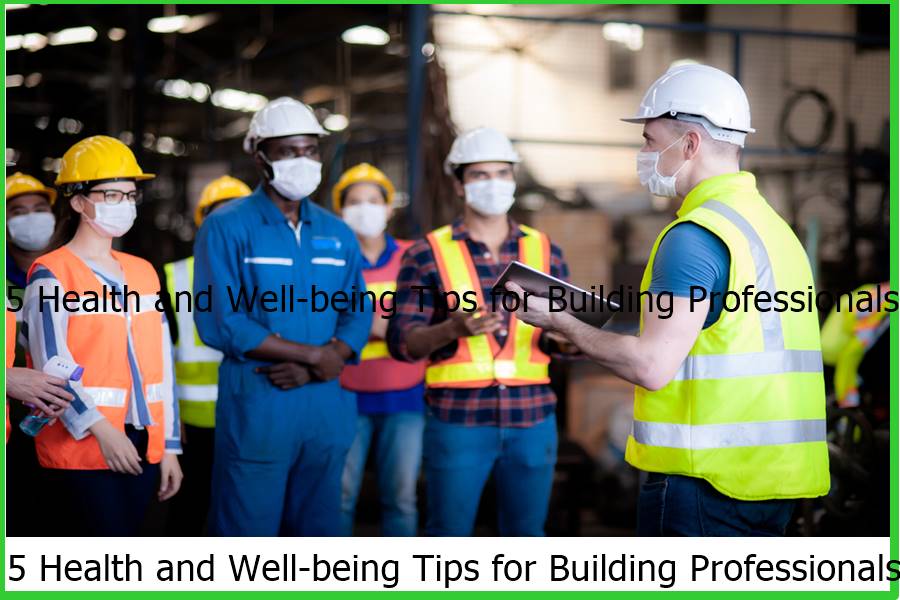Pet Safe Cleaning: How To Clean When You Have A Dog
Pet Safe Cleaning: How To Clean When You Have A Dog
Table of Contents
- How is a dog most likely to be poisoned?
- What are the most harmful cleaning products for dogs?
- Is it safe to clean with bleach if you have pets?
- What are the cleaning products that are safe for dogs?
- How can you safely clean your dog’s bed and toys?
- What are the safest ways to clean your house with your dog’s health in mind?
- What if your dog comes into contact with one of the dangerous ingredients in cleaning products?
If you’re thinking about deep cleaning your home, it’s essential to know that some of our products to clean and disinfect our homes can threaten our dogs (and cats).
Dr. Rebecca Ashman, a veterinarian with the UK charity PDSA, comments:
“Millions of us use bleach, oven cleaners, dishwasher tablets, and laundry detergents in our homes, but we must realize that these products can be hazardous for our pets. Products like bleach and detergents are highly corrosive and cause permanent or fatal damage to a pet’s skin or interior if swallowed.”
Without ingesting these chemicals, your dog can suffer skin burns, eye damage, and respiratory problems. To protect your four-legged friend from danger, owners must ensure the products they use to clean their homes are safe to use around pets.
We want to provide you with some advice when cleaning your house with the safety and health of your dog in mind. We’ve listed the toxic ingredients you shouldn’t buy and safe and available pet-friendly product options. In addition, we will provide general advice on how to clean your house with a dog around.
How is a dog most likely to be poisoned?
What are the ingredients of cleaning products that are not safe for dogs?
Like small children, dogs do not understand the danger that some products pose. Many pets suffer from poisoning accidents due to cleaning products. Chemical poisoning from household cleaning products most commonly occurs when dogs:
- drink a toxic substance
- They try to remove a toxic substance
- (such as floor cleaners or laundry detergents) from fur or paws using the tongue
- They drink water from a toilet that contains a cleaning product
- They ingest the liquid from a household cleaning product
- air fresheners are eaten
It’s important to understand that sometimes dogs lick things off the ground and use their tongues to clean themselves. Because of this, the risk of them ingesting a potentially dangerous substance that comes into contact with their fur or paws is high. When we talk about the safety of cleaning products, we can sum it up like this: if you would not put the product in your mouth, then you need to make sure that product is not used on a surface that your dog could lick.
Remember that when cleaning chemicals are locked up and put away, the vapors left in the air continue to harm our health and that of our pets. An animal’s respiratory rate is faster than a human’s, so they are more exposed to possible poisoning.
Chemicals that are toxic to pets
Most of us use various products to clean our homes that contain toxic chemicals. The following chemicals commonly found in household cleaners are harmful to pets and especially dangerous if ingested:
- Chlorine
- Ammonia
- Isopropyl alcohol
- Formaldehyde
- Phenol
- Benzalkonium chloride: toxic to cats
- Phthalates
- perchloroethylene
- triclosan
- butoxyethanol
- sodium hydroxide
What are the most harmful cleaning products for dogs?
- Bleach
- toilet cleaner
- oven cleaner
- laundry detergents
- drain cleaner
- floor cleaner
Is it safe to clean with bleach if you have pets?
As we’ve mentioned, if swallowed, products like bleach can cause permanent or even fatal damage to a pet’s skin or interior. If you use bleach, ensure your dog never comes into contact with this product in its concentrated form (the same goes for any cleaning product that must be diluted). You should also use a properly diluted bleach solution if you know your dog will come into contact with the item you are cleaning. Then rinse the area well and ventilate the room; if you follow these steps, you are not expected to cause harm. If the smell of bleach is overwhelming, open the windows and use a fan to air out the room.
If you prefer not to take the risk, luckily, there are safer alternatives that we will talk about below.
What are the cleaning products that are safe for dogs?
If all this information has made you a bit uneasy, don’t worry. It’s easy to keep your house clean without using harsh chemicals. Many green cleaning products are safe for pets (and not toxic at all). They are not only great for pets but also the environment.
Look for cleaning products labeled “non-toxic,” “plant-based,” and “natural,” and be sure to read what their ingredients are. Enzyme cleaners are non-toxic and biodegradable. Plus, they can combat tough-to-remove stains like urine, vomit, feces, blood, grass, and mud.
Of course, even the safest and most natural cleaning products carry some risk if ingested by your pets, so it’s essential to keep them out of your dog’s reach. That said, you’re much less likely to cause serious harm to your pet’s health if you use non-toxic options.
Suppose you would like to know some products that are not very toxic and very effective for cleaning areas of your house with which your dog comes into contact. In that case, we recommend you try the brands of ecological cleaning products, Jabones Beltrán and Naturitas. Another great option is to get cleaning products that do not harm the environment in the Belgian house Ecover.
Remember that there are also natural cleaning products that you can use to break down grease and grime and that will not harm your pets nor be as harmful to the environment; these are some of them:
- Baking soda
- Vinegar
- Lemon juice
How can you safely clean your dog’s bed and toys?
Laundry detergent residue left on your pet’s clothes, blankets, and toys can harm your pet, especially those puppies who like to chew on bedding and toys. Fortunately, several detergents are available that are non-toxic and contain no harmful chemicals.
Non-pet-safe fabric softener sheets can cause kidney failure and pulmonary edema when a pet chews on the sheet, so be sure to use a pet-safe option and dispose of it immediately, as there is a choking hazard.
What are the safest ways to clean your house with your dog’s health in mind?
Dogs and cats, especially younger ones, are curious by nature and will want to inspect everything, even those things that can be dangerous. As a responsible pet owner, it’s up to you to make sure every room in your home is safe for your beloved pet. Here is a helpful guide to cleaning your house:
Keep your dog out of danger.
- If you are cleaning the floor or other areas where your pet is often, keep your dog out of the room while you clean the floor or surfaces. If you use chemicals, rinse the area well with clean water afterward. Do not let your dog in the room until everything is dry.
- Ensure your kitchen and bathroom have plenty of ventilation when cleaning them.
Always read the labels.
- Look at labels for advice, and if you have products in your house that say they are corrosive or harmful if swallowed, keep them out of your dog’s reach.
- Follow instructions: Disinfectant cleaning products (especially floor cleaner, bleach, Dettol, etc.) are often designed to be diluted before use. In its concentrated form, any solid disinfectant, such as bleach, can harm your pet if it comes into direct contact with the product.
Store cleaning products carefully
- Some pets naturally explore or chew boxes and bins, so it’s essential to keep cleaning supplies closed and safely stored in locked cabinets or on high shelves that your dog can’t reach.
- Consider installing child-proof locks on cabinets since some pets are curious and curious and intelligent.
Dispose of cleaning products safely.
- After cleaning, discard dirty or unused solutions, and clean and put away cleaning utensils, such as the mop.
- Dispose of empty cleaning containers promptly and adequately. Keep bins tightly covered so pets can’t get into them.
Kitchen and bathroom
- Kitchens and bathrooms can be one of the biggest threats to pets. As mentioned, floor cleaners are one of the main culprits of accidental poisoning. Make sure you get a green cleaner that isn’t too toxic.
- If you have a pet that drinks from the toilet, do not use a continuous cleaning product and keep the toilet seat closed at all times.
Living room and bedroom
- Carpets and furniture can retain residue that can harm your dog’s health. Choose a pet-safe option if you need to clean your carpets or furniture.
Garage
- Clean your garage floor to remove any chemicals (such as antifreeze, which can be fatal if swallowed).
What if your dog comes into contact with one of the dangerous ingredients in cleaning products?
If you suspect your dog has been exposed to toxic chemicals in cleaning products, keep an eye out for behavior changes in your pet and watch for any of the following symptoms:
- Ulcerated or irritated skin, including inside the mouth
- vomiting
- Diarrhea
- Cough
- difficulty eating
- Excessive salivation or foam at the mouth
- rashes or burns
- Lethargy or malaise
- seizures
If you think your dog has come into contact with dangerous cleaning products, take the following steps:
- First, stay calm.
- Please keep your dog away from any source of poisonous substances, and do not try to make him vomit.
- Determine what substance is responsible for making your dog feel bad. Read the product label to discover the list of ingredients and the instructions that you must follow if there has been an accidental ingestion.
- Contact your vet immediately and tell them when, where, and how your dog was poisoned. Follow your vet’s advice!
- Bring the poison in the container (or a sample if you don’t have the container) if you’ve been advised to take your dog to the vet for checkups.
Never try to treat your dog on your own, and don’t wait and see what happens. He calls your vet and asks for help.
Ensuring companion animals receive urgent veterinary treatment if contact with household products is suspected can mean the difference between life and death.
Can you have a pet and a clean carpet?
Keeping the carpet clean is necessary for our health, especially if our little ones play on it. But with animals in the house, this is not always easy. Although dogs and cats are the most common, ferrets, rabbits, and pigs are also kept as pets… In general, many animals that we adore but that gives us the odd headache with the hair they shed.
Fur animals spread them around the house, which can be a problem in maintaining hygiene at home. In the case of carpets, there are solutions for everything. Today we will see that having fur animals and clean carpets is feasible
Pet Safe Cleaning: How To Clean When You Have A Dog.
Brushing our pets
One of the drawbacks of animal hair, as well as possible mites or dust that they carry, is that it falls little by little throughout the house. Hence, it is worth brushing our pets frequently, always with specialized brushes recommended by veterinarians or animal experts.
We should do this blow drying (obviously) away from the carpets. And if possible, on a white floor where sweeping is easy. All the hair about to fall that we brush will be one less headache when we clean our carpet. The hairs tend to become attached to the tissues, become knotted, and are difficult to remove.
How to have more energy without caffeine?
Pet Safe Cleaning: How To Clean When You Have A Dog
Take special care with dogs.
Cats are cleaner, but dogs act as big doormats that sweep the whole house. And sometimes also the street. As much as we clean the carpet (we’ll discuss how soon), they will leave much more than the hair on it.
Dogs drag dust from all over the house, dirt from the street floor, and even moisture if they have stepped in puddles, rolled on the grass, or rained.
Frequent sweeping of the house helps dogs not distribute dust on the carpet (where it is easily fixed). When dogs enter the house from the street, it is advisable to clean their paws with water, wet wipes, or a brush to remove soil debris that usually gets between the fingers. And if it has rained, it will be advisable to dry them in the bathroom or kitchen (with a tiled floor) before letting them roam the house.
Pet Safe Cleaning: How To Clean When You Have A Dog
How to clean the carpet if you live with an animal
First, it is worth airing it out a bit before shaking or washing the carpet without hitting it. Just lift it from the corners and let the hairs fall. The reason is that if we shake it or moisten it, we will help the hairs to attach to the fabric. We want just the opposite.
Pet Safe Cleaning: How To Clean When You Have A Dog
using the vacuum cleaner
Vacuuming to remove hairs works well 50% of the time. Or with 50% of the hairs. The problem is that the hairs have already been fixed in the carpet by the time we vacuum. However, it will be ideal for giving a first review and removing as many hairs and dirt as possible.
His thing, if we have pets, is to vacuum at least a couple of times a week. The time will vary depending on the type of pet or its hair. For example, a wool dog is not the same as a boxer.
Using pieces of foam
Foam rubber has many uses, one of which traps dirt thanks to its surface properties. With a small piece (it is enough that it fits in our hand), we can pass it on the carpet, pressing slightly.
Some of the remaining hairs will remain attached to the foam. To clean and use the foam again, put it under the tap and let it dry.
Pet Safe Cleaning: How To Clean When You Have A Dog
using duct tape
There is a little trick that will help us with those unruly hairs that always stay. We will use packing tape (the classic thick and brown adhesive tape) and a jar or glass bottle for this. If we have a trick, the idea is to surround the glass with the tape, leave the adhesive face outside, and drag the bottle or jar across the carpet. Rolling. With a few passes, we will have all the hairs.
If we don’t have a knack, we can always gradually stick a piece of adhesive tape on the carpet, but the method is much slower. Removing the hairs does not damage the carpet because it does not have enough force to break the fabrics, but it does make the hairs stick.
Of course, we can always go to a specialized store to buy a roller to remove hair or lint. The problem is that it is difficult to clean them after a few uses.
Keeping the carpet free of animal hair is vital to a clean home. As we have seen in this article, keeping the carpet clean by having animals is possible. At least as long as we have a minimum of care with our textiles.
Note: These tips can be used on other fabrics, such as curtains or socks, which are also susceptible to carrying animal hair.
Kratom: Unsafe and ineffective 2023
Everything you need to know about hair extensions
Solar panels in winter: how much energy they provide us
Do I Need To Get My Well Women’s Exam Every Year?
Pet Safe Cleaning: How To Clean When You Have A Dog


